
Snoopy Fashion Jacket Autumn Release 2017
Snoopy Fashion Jacket Autumn Release 2017
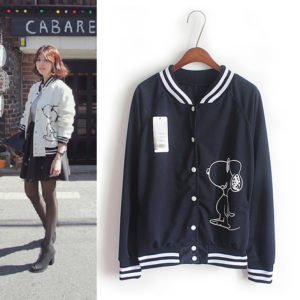
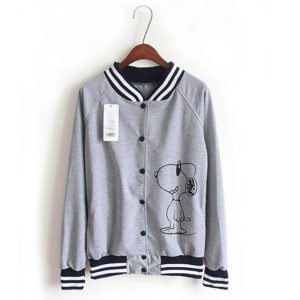
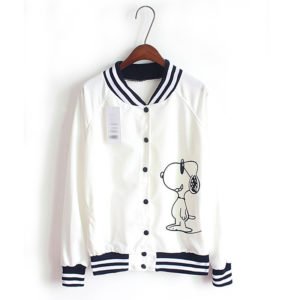

Snoopy Fashion Jacket Autumn Release 2017




Snoopy Celebrates Singapore National Day 2017
Watch Snoopy’s evolution.

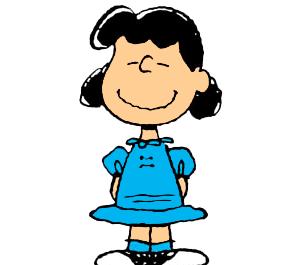
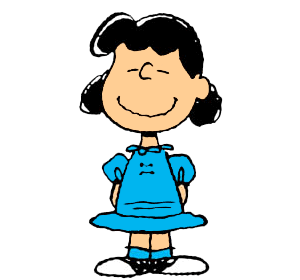
LUCY VAN PELT
Oh, Charlie Browwwwn. I’ll hold the football and you kick it…
For years, that sing-songy lilt in Lucy’s voice as she tossed a football in the air, taunting our hero, has pretty much defined her character. Charlie Brown’s ultimate foil, Lucille “Lucy” Van Pelt made her first appearance as a toddler on March 3, 1952. By 1954, however, Schulz had aged her to be Charlie Brown’s contemporary and the two have been going at it ever since. Lucy plays right field on Charlie Brown’s baseball team. She has never caught a fly ball. Despite her brash, overbearing and sometimes all-too-honest observations, she does have a softer side. It was Lucy who actually said the now familiar phrase “Happiness is a warm puppy” in the April 4, 1960 comic strip.
“She genuinely likes Charlie Brown and cares about him,” observes director Steve Martino. “When she gives him advice at her psychiatric booth, she may do so in a funny way, but it’s coming from a place where she’s really trying to help him. She sees the world through her own filter and fully believes that is the only way to see the world.”
Lucy’s unique point of view, sense of humour and ability to cut to the chase are front and center in the film, and for some, it was a chance to rediscover just how funny she can be. “In researching the strip and exploring the characters, I had forgotten just how funny Lucy as a character really is,” says producer Michael Travers. “Her certainty that she’s always right and her ‘my way or the highway’ attitude, while being completely wrong, end up being some of the funniest moments in the film – Lucy just being Lucy.”
Charlie Brown and Snoopy aside, perhaps one of the most recognisable silhouettes of all the characters is the shape language Lucy’s hair. But keeping her iconic bob on model was a challenge.
The bob is always dominant on the opposite side to where she looks,” Martino explains.” We designed the objects of her hair so that when she goes from one Sparky view pose to another, the objects will move and snap in place to follow her eyeliner.”
Because of the sheer volume of hair on Lucy (and other characters such as Schroeder, Marcie and Peppermint Patty), the crew wanted to avoid the dreaded “helmet hair” look. Explains Job Campbell, fur supervisor, “We purposely added flyaway hairs on Lucy and other characters to not only avoid helmet hair, but to emphasize the Sparky line. These are messy kids.”
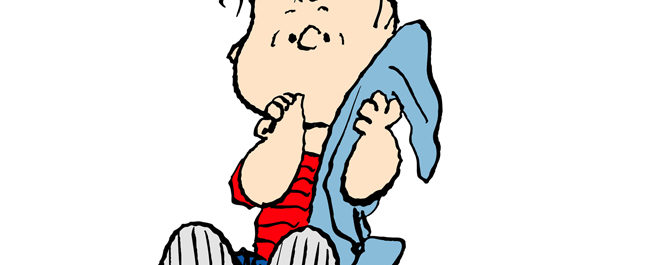
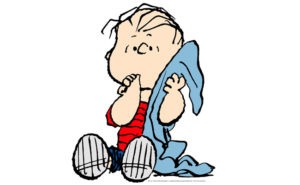
LINUS VAN PELT
Listen, Charlie Brown, Ignoring what my sister Lucy says has enabled me to make it this far in life.
Charlie Brown’s loyal and trustworthy friend Linus made his debut as the baby brother of Lucy on September 19, 1952, but did not actually speak until 1954. Over the years, Schulz progressed his age to match that of the other characters. Whether on the baseball field (where Linus plays second base), at the neighborhood wall or showing unwavering faith in the Great Pumpkin, Linus is always there for Charlie Brown. “You like to think that sometimes you might have just a little bit of that wisdom that Linus had,” says director Steve Martino. “I always loved that about him. Here’s the kid with the security blanket, but he possesses wisdom years beyond any of the other kids.”
Although Linus’s trusty blanket does not take on a personality in the movie like it does in the specials, multiple rigs were created so that the blanket could be animated and posed to do whatever the animators needed it to do. “There was the classic pose of Linus sucking his thumb while holding the blanket,” recalls supervising animator Nick Bruno, “crumbled on the floor, over his head like a shepherd, and being dragged along on the ground.”
For fur supervisor Jon Campbell, Linus’s hair, or more accurately, lack thereof, proved rather challenging when it came to defining the character’s look.
“In some of the reference from the strip, he basically just has three ribbons or strands of hair,” says Campbell. “Translating those ribbons into a full head of hair became our problem to solve.”
Turning to the work of Tom Eberhart, the team’s primary goal was to stay true to Schulz’s pen line. By closely examining the work of Everhart, the artists were able to fill in the blanks, or in this case, hairs.
“We explored a lot of iterations on Linus, settling on three layers of different kinds of hair,” Campbell says. “Two layers are actually two varying degrees of fuzz with a final layer of different lengths and sizes of strands rigged in a similar manner to Charlie Brown’s hair.”
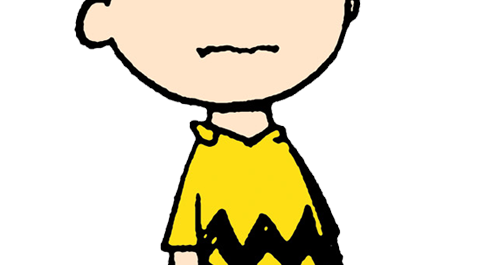
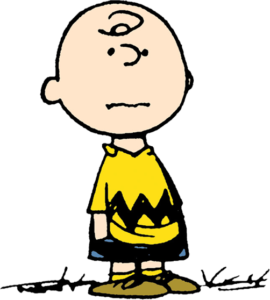
CHARLIE BROWN
Whenever I feel really alone, I just sit and stare into the night sky. I’ve always thought hat one of those stars was my star, and at moments like this, I know that my star will always be there for me. Like a comforting voice saying, “Don’t give up, kid.”
To say that “Good ol’ Charlie Brown” holds a unique position in pop culture would be an understatement. He has the illustrious distinction of being the only Peanuts character to appear in both the first comic strip on October 2, 1950 and the last strip on February 13, 2000. Despite his less-than-stellar track record as a baseball manager, his inability to fly a kite or kick a football, through it all Charlie Brown never gives up. His eternal optimism gives us hope and that has made him undeniably relatable to readers all over the world.
“Everybody’s got a little piece of Charlie Brown in them,” observes Martino. “What’s great about him is that he operates on such an extreme level, which always makes you feel better about your and we’ve all had failures. He teaches us a wonderful thing in that in the midst of all that, you can pick yourself up and try again, so it was very important for us to capture that spirit in his expressions.”
As the team began the process of refining details for each of the characters’ looks, they turned their attention to one of Charlie Brown’s most defining features: his hair. Or lack thereof.
So just what exactly is the curlicue, loop-de-loop swirl that rests just above Charlie Brown’s forehead called? “I just call it his hair,” says Martino with a smile. “But what little hair he has in that loop is full or personality,” continues the director. “ The way Schulz drew his hair would echo Charlie Brown’s emotions. It would move and reinforce his own expressions.”
According to Charlie Brown’s stylist – aka fur supervisor – Jon Campbell, 219 strands of hair were created for his iconic swirl/loop/curl.
“All of his hairs are wound up into a bundle,” explains Campbell. “We knew we could not just give Charlie Brown a single hair. No matter how the hair is rendered, it would only be a pixel wide, so that is why bundled a large number of hairs that we squeezed, straightened and relaxed just right to basically reproduce the ebb and flow of Schulz’s pen line.”
Because Schulz drew the hair loop differently each time, Campbell knew he needed to provide the animators with enough flexibility to achieve the desired results. “If we were to take a hair and groom it into a curve, it will basically be stuck in that position,” he explains. “So instead of grooming his hair into a loop-de-loop, we groomed it straight out, like a unicorn, and rigged it, allowing the animators to control it.” Campbell compares Charlie Brown’s hair rig to that of a spring coil: “You have no idea how long a spring actually is until you uncoil it,” he says. “Proportionally, when uncoiled, Charlie Brown’s hair is nearly two feet long!”
In a nod to the spring coil reference, Martino cites a very subtle Easter egg (an oblique reference or in-joke) in the film: “The wire sculpture that Charlie Brown makes by mistake looks exactly like his hair loop.”
Buy Charlie Brown at
http://www.charliebrowncafesg.com/product/charlie-brown-plush-toy-45cm/
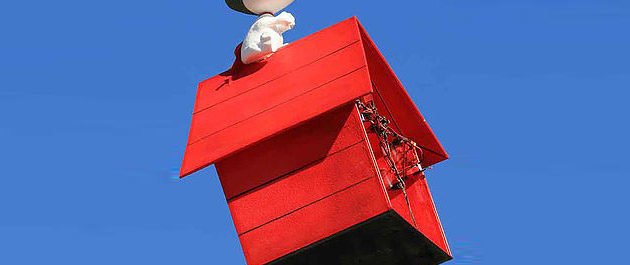
Snoopy’s Doghouse
Almost as iconic as Snoopy himself is his signature red doghouse. “Normally, for a protagonist and antagonist, we would use color to play off each other, so we had to balance the red of Snoopy’s doghouse against the red of his arch enemy,” explains Dunnigan. “The Red Baron’s plane is just slightly more muted than Snoopy’s doghouse, which is a pure red.” Adds lighting supervisor Jeeyun Sung Chisholm, “The red of Snoopy’s doghouse is considered one of the hero colors established in the strip, so it was important that no other object had the same color.” Because of the sharp, contrasting colors present in Snoopy’s fantasy world, the doghouse can appear a bit darker while still maintaining consistency in design.
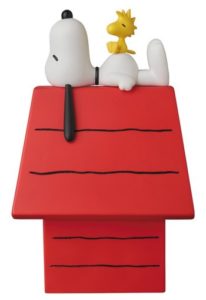
An up-close examination of Snoopy’s doghouse reveals all the great detail in the bevels, lines and styling that went into the design. “The doghouse was also rigged to be favourably shot in camera,” explains Dunnigan. “Like the characters, it needed to feel like the comic, so its perspective could be altered in camera to give the feeling of something we would see in the strips. So not only did Snoopy have custom rig, his doghouse did, too!

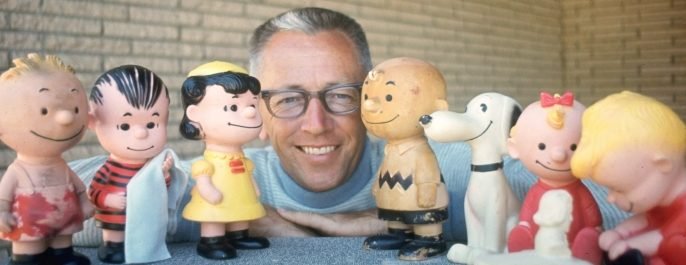
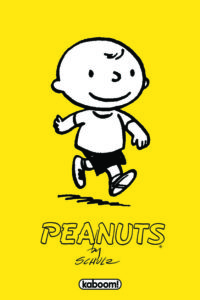
“I always thought of my dad as the great observer,” reminisces Craig Schulz, the son of Charles M. Schulz and one of Snoopy and Charlie Brown: The Peanuts Movie’s writers and producers. “No matter where he was or what he was doing, he would find a comic strip in the moment. Whether it was a tennis match, a game of golf or just ordinary life, he never missed an opportunity to tell a story.”
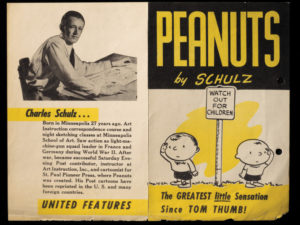
On October 2, 1950, Charles M. Schulz began a 50-year journey of sharing those observations with the world. Through a comic strip that made its debut in just seven newspapers across the country, he introduced readers to the characters of Shermy, Patty and Good ol’ Charlie Brown. Over time, Schulz would introduce the rest of the characters that are now staples in pop culture.
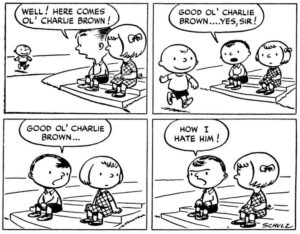
By the end of the 1960s, Peanuts had reached millions more fans through publishing, licensing and marketing partnerships. Although the first licensed Peanuts products were paperback books published in 1951, it was a 1960 comic strip featuring the now-iconic motto “Happiness is a Warm Puppy” that launched the characters into the stratosphere of the licensing industry. The “Happiness is…” phrase had caught the attention of Connie Boucher, founder of Determined Productions, who approached Schulz with the idea of publishing a book based around it. Schulz was initially reluctant, but agreed, penning additional “Happiness is…” sayings. The book spent forty-five weeks on the New York Times Best Sellers list.. An industry was born.
Today, the Peanuts characters are an ongoing merchandising and marketing force with long-standing relationships with top brands still in place. For example, 2015 marks the 55th anniversary of the brand’s relationship with Hallmark, the characters have been featured in the Macy’s Thanksgiving Day Parade since 1968 and MetLife celebrates 30 years with Snoopy and the gang as spokes-characters. The Schulz family has stayed involved with the creative direction and positioning of all things Peanuts related, still working out of offices in Santa Rosa, California, where Charles Schulz’s art studio was located.
Yet through all the boos, apparel and toys, it was always all about story and character for Charles M. Schulz. With a knack for social commentary, Schulz would introduce the characters and storylines with wit, sarcasm, humour and heart. In the mid-1960s, he introduced the character Peppermint Patty. A tomboy at heart, she excelled in the sports and served as the manager of a rival baseball team. While that may seem benign to most now, the introduction of girls playing sports on the same team as boys was nearly a decade ahead of its time. By today’s standards, it is incomprehensible to think of a character;s introduction to a comic strip as “controversial,” yet that is exactly what occurred in 1968 when Schulz introduced Franklin to the cast, the 1st African American character featured in the strip. Encouraged by schoolteacher Harriet Glickman, Schulz introduced the character of Franklin on a beach to a vacationing Charlie Brown and later incorporated him into the strip as a classmate of Peppermint Patty and Marcie. Schulz received letters of opposition, which he ignored. Schulz was able to further expand his voice through the various personas of his alter-ego Snoopy, most notably Joe Cool, the World Famous Author and of course, the World War I Flying Ace.
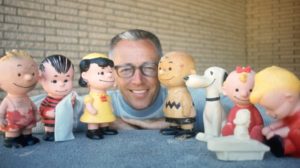
Schulz possessed the natural ability to organically and seamlessly weave relevant topics into the panels his strips as if they were self-evident. “Through it all, my dad never took advantage of his position,” says Craig Schulz. “In 50 years, he never turned cynical about the world around him and that paid off. People genuinely care about these characters. I remember when Snoopy’s doghouse burned down,” he add. “People sent him money to help rebuild it!”
Bordering the top of a wall in the main conference room at Charles M. Schulz Creative Associates at One Snoopy Place in Santa Rosa is a line-up of each of the major Peanuts characters: Shermy, Patty, Pigpen, Violet, Sally, Schroeder, Linus, Charlie Brown, Snoopy, Lucy, Woodstock, Peppermint Patty, Marcie, Franklin, Rerun and Frieda. When seated at the table, it gives the impression that the characters are watching over all the activity in the room.
“We always say that each of the characters represents a piece of our dad,” says Craig Schulz. “Chalie Brown was his real self, while Snoopy is what he wanted to be. The reality is that each of us can find an identifiable character to relate to.”
The universal appeal of the characters, whether it is the crabbiness of Lucy, the heart of Linus, the introspection of Marcie, or one of the many personas of Snoopy, is without question why the strip and its characters have remained relevant as Peanuts nears its 70th anniversary.
By the time the strip completed its run in 2000, Peanuts had an estimated readership of over 350 million people, in 2,600 newspapers, representing 21 countries around the world. With a combined grand total of 17,897 strips (15,391 daily; 2506 Sunday), each one drawn, inked and lettered by Schulz, the comic continues in syndication, reaching new readers every day.
The list of accomplishments and accolades bestowed upon Peanuts is, in a word, impressive: 50 primetime network TV specials, 4 Emmy awards, an additional 32 nominations, 4 Peabody awards, 2 Grammy awards, 4 feature animated films, an Oscar nomination, a Broadway musical, 2 Tony awards and multiple magazine covers on Time, Newsweek, LIFE, Rolling Stone, TV Guide and People, etc. To say the strip and its characters have made an indelible impact from the mid-twentieth century to the present would be an understatement.
Last year, that legacy continued with the return of the Peanuts gang to the big screen after a 35 year absence, and for the first time ever in CG.
As loyal Charlie Brown and Snoopy fans, we all hope the legacy will last forever.
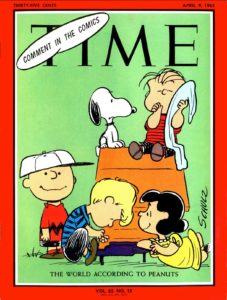
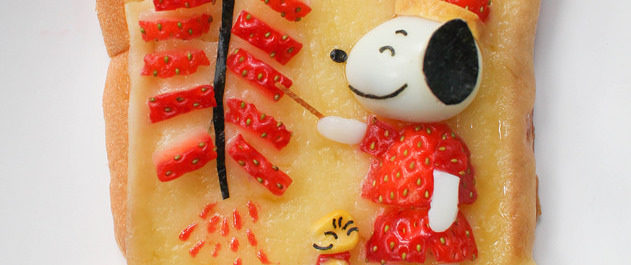

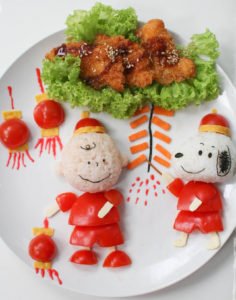
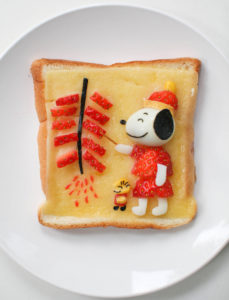

Whether it is the heartfelt monologue delivered by Linus in a A Charlie Brown Christmas or Sally bemoaning the fact that she has been robbed of “tricks or treats” in It’s Great Pumpkin, Charlie Brown, the distinct sound of the characters’ voices are just as iconic as their looks.
“These voices are ingrained into my mind,” says writer/producer Craig Schulz. Having been through a similar process for the 2011 original direct-to-DVD Happiness Is a Warm Blanket, Charlie Brown, Craig Schulz knew first-hand how important it would be to find just the right child actors to bring the Peanuts characters to life. He was also very decisive when it came to reviewing auditions, only needing to heard portions of recording to determine whether or not the right voice had been found. “I knew within hearing there words,” he recalls.
Working with casting director Christian Kaplan, the filmmakers met with nearly a thousand hopefuls on both the east and west coast, searching for their ensemble. “Sally and Marcie always seem to be the most difficult to cast,” says Craig Schulz. “Both area darn near impossible to find.”
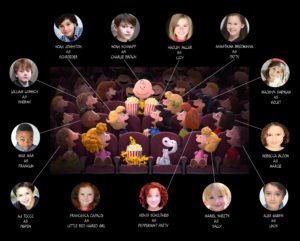
The most important quality the team looked for was authenticity and believability as a kid. “I didn’t want Christian to read or ‘audition’ the kids, but rather just to have kids talk about their lives, where they went to school, where they’re from,” recalls Schulz. During the casting process, Kaplan and the filmmakers also recorded lines from the Peanuts specials to gauge each actors’ rhythm and cadence to see if they could match their on-screen counterparts.
Working with kids can be a challenge for some, but nor Martino. “With all of the kids it’s about fun and I said that at the start of every session. There was never a ‘wrong’ in our sessions, there was only ‘trying things,’ and laughing when they’re good – which I was more prone to do than they were – and allowing time to experiment.”
Martino also discovered that his twelve years of coaching youth soccer came in quite handy for wrangling and working with his young cast. “I have always believed in empowering kids, teaching in practice, but letting them own the game,” says Martino.
“The great thing about working with kids is that they have extraordinary imaginations, which is huge, given that we are in an empty room, no costumes, no set, no props, only our ability to paint a picture in our minds of the scene we are playing.”
After an exhaustive search, Martino found his Charlie Brown in Noah Schnapp, a ten-year-old from Scarsdale, New York. “Noah has a great voice fro Charlie Brown, but also has a similar temperament,” says Martino. “When we recorded him, it allowed us to reply on his natural tendencies and it really felt like Charlie Brown.”
Casting the voice of Linus, however, gave Martino nightmares. Literally. “linus was my favourite voice from the original Peanuts specials and was the voice I was most worried about casting,” recalls Martino. “Linus had this wonderful natural lisp. It was never overdone, but felt so ‘real’. I had nightmares about trying to recreate that and having it come off as fake and strange.” Fortunately for Martino, his nightmares ended when he discovered his Linus in eleven-year-old Alex Garfin from New York. “In our story, Linus is that steady, supportive friend of Charlie Brown,” says Martino, “and like Noah, Alex also has a temperament that feels like Linus.”
In case of life imitating art, young Alex provided a calming presence on set during recording sessions with Martino. “No matter what was going on with me during production, when I would walk into the studio with Alex, I just felt better,” recalls Martino. “He had a wonderful attitude, an ability to laugh at himself and to make you feel like the work was fun.”
And in a case of life not imitating art, ten-year-old Huntington Beach, California native Hadley Miller is nowhere near he on-screen crabby, bossy counterpart, Lucy. “Hadley had this sweet, well-mannered personality and my initial concern was whether or not she could play the bold, brash side of Lucy’s characters,” says the director. But all concerns were alleviated when Miller stepped into the recording booth. “She knocked me over with her big, bold delivery,” says Martino. “She really understood Lucy. I said, ‘Wow, that was amazing,’ and then out of character, back to being Hadley, she said in the sweetest, most polite voice, ‘Thank you.’ She was perfect.”
Producer Michael Travers echoes Martino’s sentiments regarding the young actress. “We didn’t actually meet Hadley in person until after we had cast her and heard her voice, which was just spot-on,” he recalls. “Then we met her and she was this effusively gracious and sweet kid!”
Although she may not have as many lines as Lucy or Peppermint Patty, the presence of the Little Red-Haired Girl in the film is an undeniable force. “It was important that her voice has a sincere quality and to have some degrees of sweetness,” says Martino. He found his Little Red-Haired girl in ten-year-old Francesca Capaldi.
“I was so taken by Francesca’s personality,” recalls the director, “that she seemed like someone Charlie Brown would love to know.”
Writer/producer Craig Schulz was especially pleased with how the cast shaped up. Early on in the recording process, he attended a voice session of Mariel Sheets, the young actors who portrays Sally Brown. Sheets had no idea who Schulz was Christmas and Halloween specials, beat for beat, with perfect pacing. “She was grandson of Charles Schulz, who represents the fourth generation of the Schulz family to be credited on the film. Micah voices the character of Little Kid, who appears in a few scenes throughout the film.
Although the voices of kids had been cast, there was one more crucial voice to cast: Snoopy. Schulz knew there was only one person who could bring to life the world’s most beloved beagle, and that person is non the than legendary Bill Melendez. “It was really important for us to use Bill’s voice, so I approached his studio and secured the majority of the recordings he had made over the years,” says Schulz.
In addition to obtaining Melendez’s performance recordings of Snoopy, the filmmakers also secured his recordings of Woodstock.
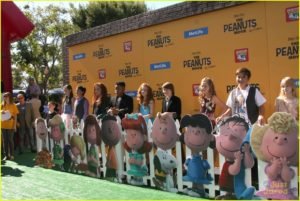
For the final sound mix of the film, director Steve Martino turned to two-time Academy Award-winner and long-time Blue Sky Collaborator Randy Thom, and his team and Skywalker Sound, who had already worked with both Martino and Travers on multiple productions. With more than 20 credits on animated films alone, including the Rio films, Thom is no stranger to challenges of animation and designing a world of sound from scratch. “It’s a wonderful thing to work in a variety of styles,” says Thom. “What I particularly enjoyed about this film is that directive and challenge set by Martino that we stay true to the original sound of the Peanuts TV specials, which I found especially intriguing.
“Even though we’re contemporary equipment, we’re employing special techniques to antique them,” continues Thom, “incorporating characteristic sounds you’d recognise from the specials.” One of those techniques is using ribbon microphones similar to the ones used by Bill Melendez and Lee Mendelson.
Entrusted with the recordings of Melendez, Thom took special care incorporating them into the film. “We studied his voice and recordings he made at the time,” explains Thom. “He would record himself doing just hums and purrs and whistles and modulate his voice up and down, and then he would later alter the pitch higher so that it was funny little creature. The trick of course is to invent a language that is expressive emotionally but isn’t comprised of words, just sounds that are halfway between an animal sound and human vocalisation, and to be funny when appropriate and of course affectionate when appropriate.”
The filmmakers also turned to one of the world’s top new musical artists, Billboard Music Award-winning and Grammy-nominated Meghan Trainor, to pen and original song for the film.
“Meghan has written a wonderful song titled “Better When You’re Dancin” that expresses Charlie Brown’s optimistic attitude as he works with Snoopy to become a better dancer,” says Martino. “She is such as an amazing singer-songwriter and shining example of the thematic heart of story.”
According to Martino, Trainor met with the team at Blue Sky, then seemingly overnight captured the essence of the film in song. Continues the director, “Musically, Meghan had me from her very first rough demo; my foot was tapping and I have a huge smile on my face as I could see this moment in the movie being lifted by her unique talents.”
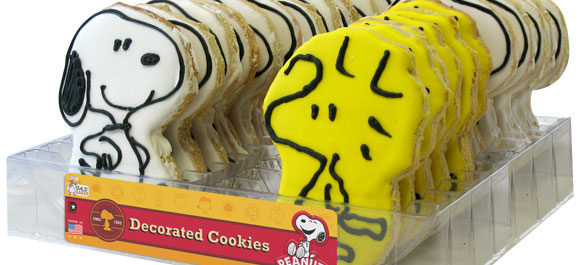
Hi, Snoopy fans, some snoopy cookies for you. which one do you like?
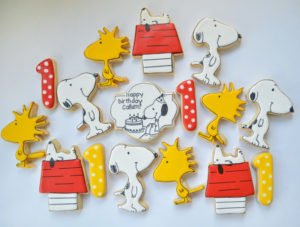
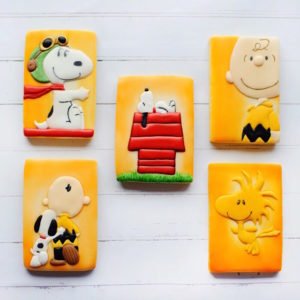
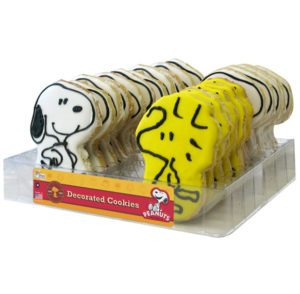
Recent Comments